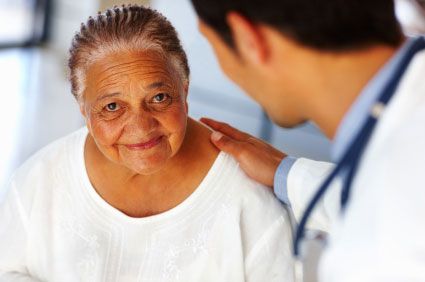Silver Tsunami: Targeting Interventions for Growing Number of Older Survivors
Older Americans represent a rapidly growing segment of the US population in what some have termed a “silver tsunami” with important implications for the delivery of healthcare services.
Older Americans represent a rapidly growing segment of the US population in what some have termed a “silver tsunami” with important implications for the delivery of healthcare services.

Older Americans represent a rapidly growing segment of the US population in what some have termed a “silver tsunami” with important implications for the delivery of healthcare services. As a result of this trend, the number of cancer survivors living into old age is also expected to dramatically increase, a new study has found, and the findings underscore an emerging unmet need for interventions targeted at older survivors.
In response to the rise in the number of older individuals who have cancer or survived the disease, the study’s authors suggested that medical professionals proactively prepare to meet the healthcare needs of this group, which are likely to be complex due to comorbidities often associated with advancing age.
“Although a number of interventions have been developed to help survivors cope with cancer and thrive in the face of cancer-related symptoms, few have targeted older adults, and this remains an area of critical need in survivorship science,” lead author Shirley Bluethmann, PhD, MPH, and colleagues wrote in Cancer Epidemiology, Biomarkers & Prevention. “Importantly, effective strategies must be implemented now to address the tsunami of aging cancer survivors that is rapidly approaching.”
To capture cancer incidence and survival data spanning from 1975 through 2012, researchers used Surveillance, Epidemiology and End Results (SEER) data, in addition to Medicare claims, to estimate the comorbidities commonly found in older adults. Further, researchers used data from the US Census Bureau and applied the prevalence approach model to create their prediction of cancer prevalence for the period 2016-2040.
The authors projected that the overall number of cancer survivors in America will rise from 15.5 million to 26.1 million between this year and 2040; whereas 62% of today’s cancer survivors are aged 65 or older, by 2040, 73% of cancer survivors will fall into that age group. Among that 73%, 24% will be aged 65 to 74 years, 31% 75 to 84 years, and 18% will be aged ≥85 years.
Additionally, in the population aged >90 years, more men than women will have survived cancer (37% and 25%, respectively), which the authors suggest is likely due to the diagnosis of prostate cancer, which is generally found in older men.
Looking at comorbidities, the study team found that, over approximately the past 10 years, the likelihood of additional health problems was much more associated with advancing age than with a patient’s cancer history. Of people who had never had cancer and were aged ≥85 years, 42% had serious comorbidities, while 47% of cancer survivors in that age group had a similar burden of comorbidities. Among people not affected by cancer who were aged 66 to 74 years, 66% had no comorbidities, compared with56 % of cancer survivors in that age group.
Among older cancer survivors, those who had experienced lung cancer had the worst burden of comorbidities, and those who survived breast or prostate cancers had the least comorbidity burden.The most common comorbidities among older cancer survivors were congestive heart failure, chronic obstructive pulmonary disease, and diabetes.
Due to the medical complexities associated with comorbidities, older adults with cancer often cannot participate in clinical trials. As a result, little is known about how to treat patients who develop cancer at older ages.
“Older patients have the same cancer treatment options as all patients and survivors have, but there are special considerations with older adults,” explained Bluethmann, a Cancer Prevention Fellow at the National Cancer Institute.
“Age is one of them, but we also know age doesn’t tell us all the information we need. We also have to look at their medical history, as well as their individual strength and functionality. An older person will work with the doctor and medical team to determine what they need in their individual situation, but one of the factors that needs to be taken into consideration is if they will be able to tolerate all types of treatment. Older people can be very sensitive to chemotherapy. How the dosing will affect the individual is hard to predict.”
Bluethmann recommended recruiting more older individuals to participate in clinical trials, but in the meantime, the authors had suggestions for ways to better support this population, including counseling about lifestyle, including physical activity, as a means of reducing symptoms related to cancer or its treatment effects.
The researchers noted that comorbidities which pre-exist cancer “are important predictors of function and health status in the posttreatment period, potentially offering an opportunity to focus on rehabilitation.”
Finally, the authors recommended that vulnerable populations, such as lung cancer survivors, be identified and screened to see how they are functioning and what kinds of support they may need, as a way to help them survive long-term.
“We definitely need to be rethinking the care implications,” Bluethmann said. In addition to broadening clinical trial participation, “We need to do a better job of engaging the broader healthcare team, such as other primary care doctors, nurses, caregivers, and family members providing care to survivors.”
Bluethmann SM, Mariotto AB, Rowland JH. Anticipating the "silver tsunami": prevalence trajectories and comorbidity burden among older cancer survivors in the United States. Cancer Epidemiol Biomarkers Prev. 2016;25(7):1029-1036.


